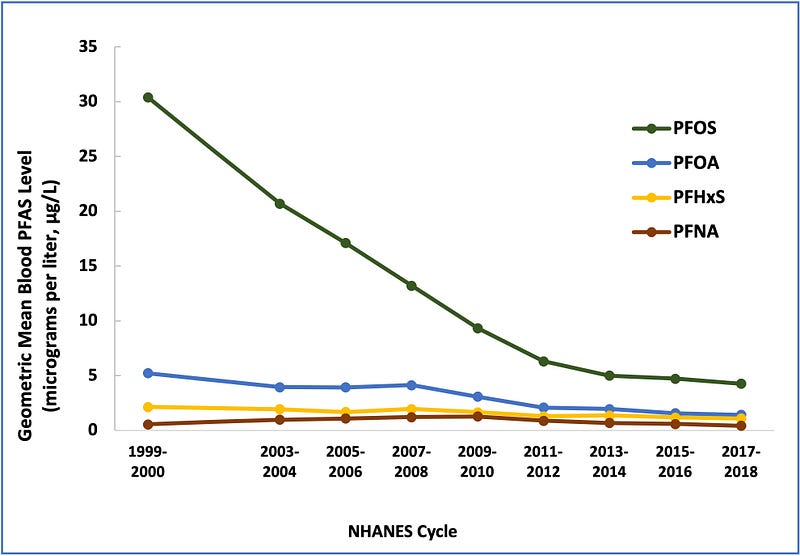Exploring the Risks of PFAS in Takeout Containers
Written on
Understanding PFAS and Their Impact
When I order my favorite hot and sour soup, I often wish I could pick it up in a cold container to heat it later. However, I'm informed that everything is prepared fresh, leaving me with a steaming bowl in a potentially harmful plastic container. This brings us to an important topic: PFAS.
Per- and polyfluoroalkyl substances (PFAS) encompass a vast array of synthetic chemicals that have been integrated into consumer goods since the 1940s. Characterized by their robust chemical bonds of carbon and fluorine, these substances break down at a remarkably slow rate. Their hydrophobic and lipophobic properties allow them to persist in the environment, leading to their alarming accumulation in human blood; a staggering 97% of Americans have detectable levels of PFAS in their systems.
In case that statistic doesn't alarm you, consider this: nearly everyone in the U.S. has tiny particles of plastic circulating in their bloodstream. This should raise serious concerns for all of us.
While we have made strides in eliminating some harmful PFAS, such as PFOS and PFOA, which were largely phased out in the early 2000s due to their negative health effects—including reproductive harm and increased cancer risk—there are still many PFAS compounds that remain unregulated and poorly understood.

PFAS Exposure: What We Know
The degree of PFAS exposure can vary significantly depending on proximity to sources of contamination, frequency of exposure, and the concentration of the chemicals involved. Certain occupations, particularly those linked to PFAS manufacturing or usage, face higher exposure risks compared to the general population.

Major contributors to PFAS contamination include industrial sites involved in papermaking, textile production, and electroplating. Although PFOS and PFOA have been scrutinized most closely, many other PFAS compounds exist that may also pose significant health risks.
Despite the efforts to reduce these chemicals, ongoing testing indicates that low levels of PFOA persist in the environment. Fast-food chains have vowed to eliminate PFAS from their packaging by 2025, yet Consumer Reports revealed that PFAS were found in packaging from every retailer surveyed.

Consumer Reports tested over 100 food items, revealing that 22 exceeded the safe cutoff for PFAS. Senior scientist Michael Hansen warns that no manufacturer can guarantee their products are entirely free from these substances due to their pervasive nature.
Minimizing PFAS Exposure: Practical Strategies
Fortunately, there are ways to lower your PFAS exposure through mindful food choices. Research indicates that individuals who prepare more meals at home tend to have lower levels of these chemicals in their bloodstream. For every 100 calories consumed from home-cooked meals, levels of PFAS decreased by 0.32%.
To further reduce exposure, consider the following strategies:
- Avoid microwave popcorn and opt for stovetop or air-popped alternatives, as many grease-resistant packages contain higher PFAS levels.
- Be cautious with non-stick cookware, as overheating can release harmful substances. Look for PFAS-free alternatives.
- Stay informed about PFAS levels in your drinking water by consulting your local environmental agency.
- When dining out, minimize contact with packaging, as heat and time increase the migration of PFAS into food.
While technology continues to advance in detecting these harmful substances, and research sheds light on their health implications, it's crucial to take proactive steps in reducing exposure. Bringing your own container when ordering takeout is one effective strategy.
The first video, "The First Zero-Waste Grocery Store in San Diego, California!" discusses innovative grocery shopping practices that prioritize sustainability and health.
The second video, "GETTING TAKEOUT IN YOUR OWN CONTAINER // Zero Waste To Go Food," offers insights into how to enjoy takeout while minimizing waste and exposure to harmful chemicals.
In conclusion, the journey toward reducing PFAS exposure begins with informed choices and practical actions. Thank you for engaging with this important topic.